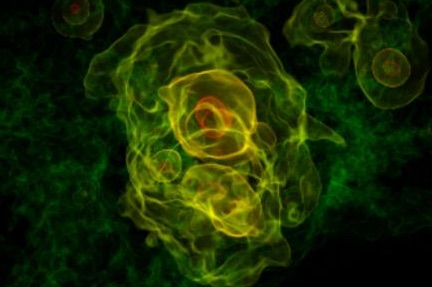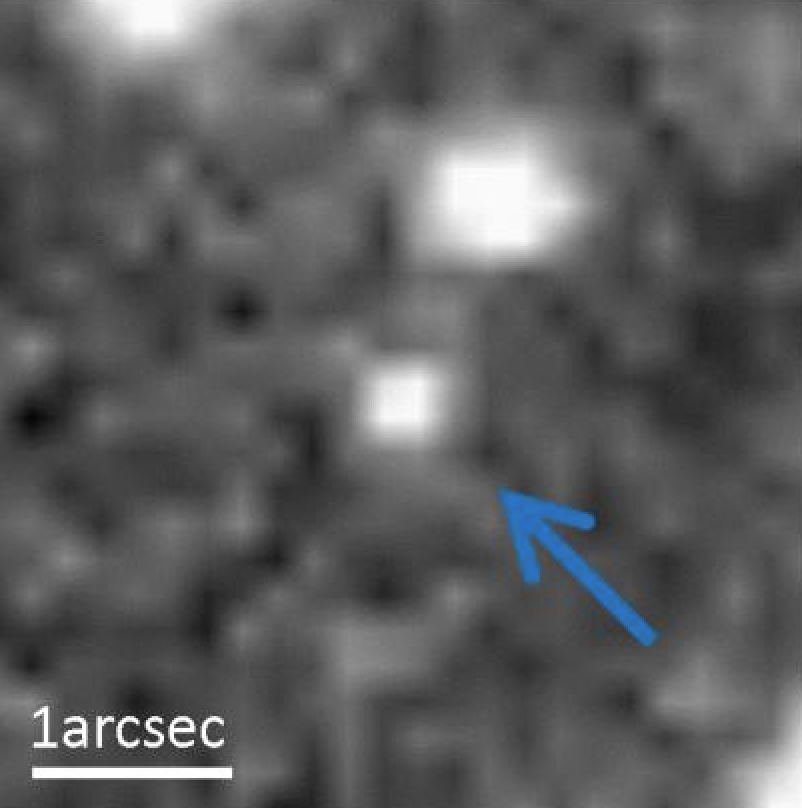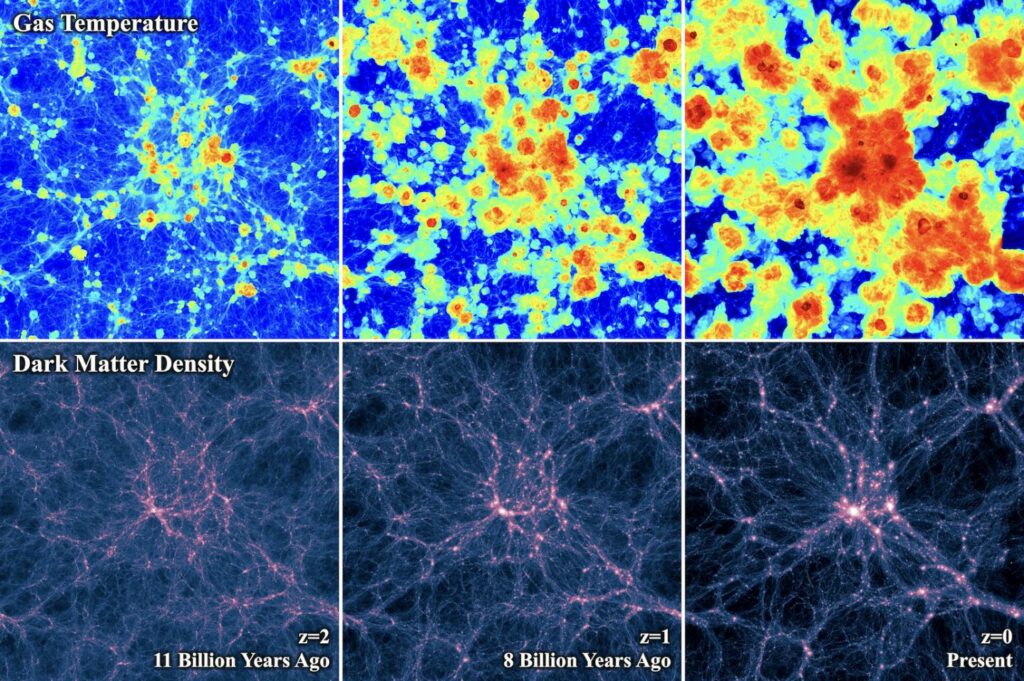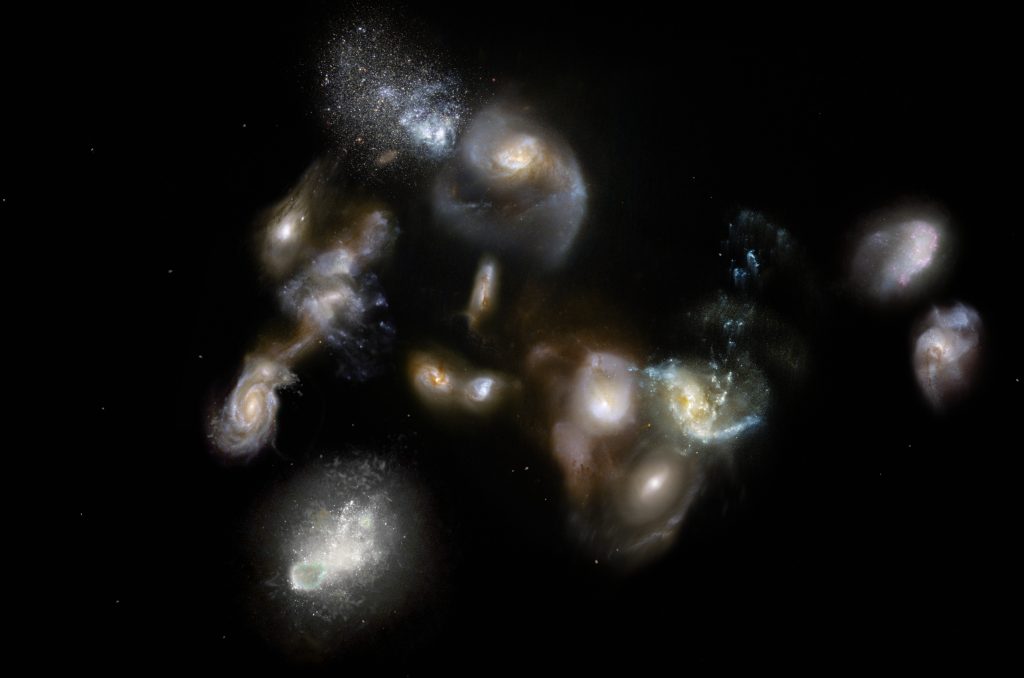The very first structures of the cosmos
In one of my newest books astronomers are trying to use a solar gravitational lens to look at the beginning of the universe. Whether they succeed, I will not reveal here. But physicists at the Universities of Göttingen and Auckland (New Zealand) have now determined what they would see with the help of greatly improved computer simulations. The scientists discovered that a complex network of structures can form in the first trillionth of a second after the Big Bang. But these are not just any random structures: the behavior of these objects already mimics the distribution of galaxies in…






